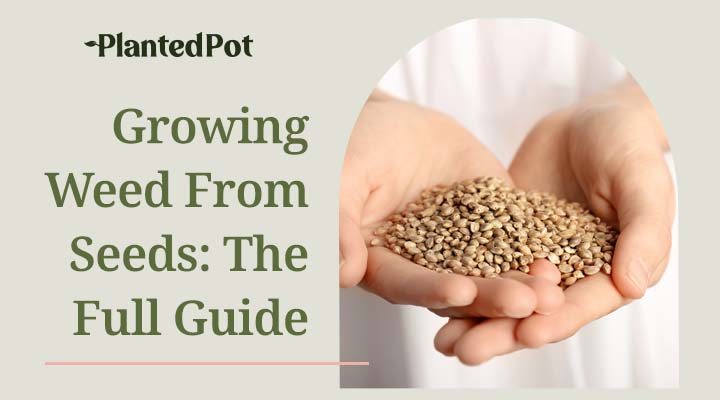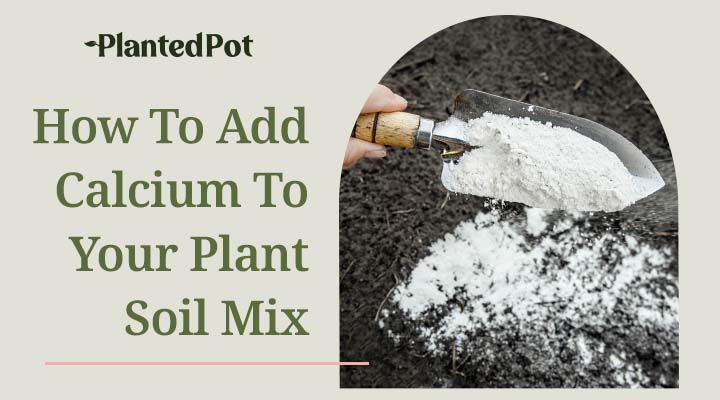
Oyster Plant Care [Lighting, Soil, Watering Needs Explained]
Home / Oyster Plant Care [Lighting, Soil, Watering Needs Explained]
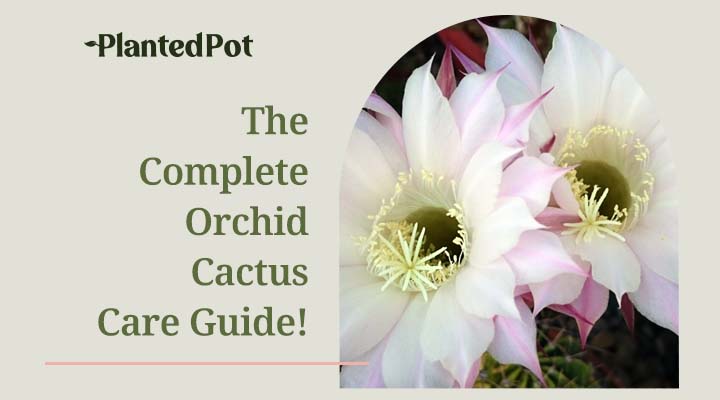
Oyster Plant Care [Lighting, Soil, Watering Needs Explained]
- Olivia Richman
- April 21, 2021
- 5:59 pm
- No Comments
Oyster Plants are vibrant, colorful, eye-catching, and all-around fun to have around the home. This is a plant that will immediately boost your decor, leaving your room looking modern, fresh, and exciting. But despite its tropical appearance, the Oyster Plant is surprisingly low maintenance. So, what goes into Oyster Plant care?
Water. Soil. Light. Humidity. In other words, the basics. Oyster Plants are very simple to take care of. Once you understand their needs, they don’t require excessive attention and are not sensitive to changes or minor mistakes. Here is everything you need to know about the Oyster Plant and its easy care so you can keep it healthy and thriving in your home!
What is an Oyster Plant?
The Oyster Plant is also known as the Moses-In-The-Cradle or Boat Lily, thanks to its boat-shaped, purple leaves that contain white flowers. With bright purple and green foliage, the Oyster Plant is a flashy evergreen native to Central America. Its natural environment is in warm, humid regions underneath the shade of taller plants.
The Oyster Plant has become naturalized in many countries, including parts of China and Japan. The Oyster Plant has also reached popularity in the Philippines for its medicinal purposes. You can even find Oyster Plants growing in parts of the United States!
The Oyster Plant has grown in popularity because of its stunning appearance and easy growth. You’ll get bright colors all year with low maintenance and simple requirements. That’s what has made new gardeners choose the Oyster Plant over orchids and other colorful plants that are a bit more sensitive.
This plant doesn’t get too large. It’s only 18 inches tall at most, which makes it easy to manage. The Oyster Plant has tri-colored leaves, sporting light-colored stripes on top and dark purple on the bottom. The leaves grow directly from the plant’s base without any tall stems or branches.
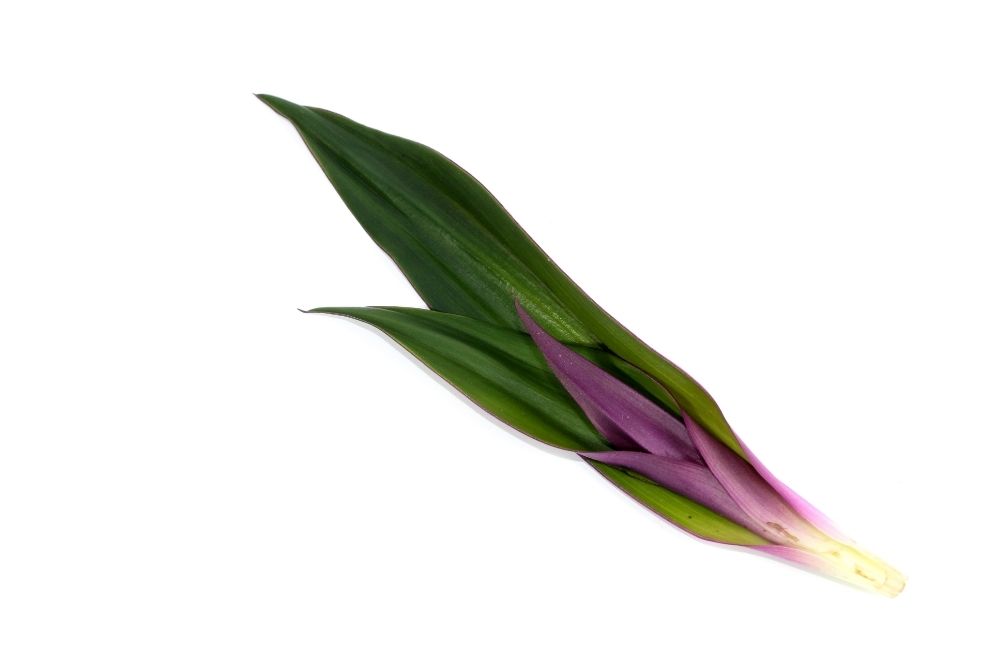
Are Oyster Plants Easy to Care For?
The Oyster Plant is known for being easy to care for. That’s one of the reasons it’s becoming so popular. The Oyster Plant is known to be hardy and doesn’t mind a few mistakes here and there (skipped waterings, lighting conditions that aren’t ideal, etc.). It doesn’t have finicky temperature requirements or complex soil necessities. Just remember to provide your Oyster Plant with indirect light, and the rest is easy.
Can You Grow Oyster Plants Indoors and Outdoors?
The Oyster Plant can easily grow indoors or outdoors, but it is often recommended to keep the plant inside your home. That’s because the Oyster Plant can become quite an invasive species due to its hardiness and the ease at which it grows. The Oyster Plant grows even more rapidly outdoors, so your problem may not be how to keep the plant alive but instead how to slow its growth!
The Oyster is a common house plant in Florida and Louisiana, although it is considered an invasive species in some of these areas. Around the southern United States — where the humid environment is similar to the tropical regions Oyster Plants love — wild growth can quickly get out of hand.
What Are the Benefits of an Oyster Plant?
The Oyster Plant has many benefits for your health. Medicinally, this vibrant plant is used for colds, sore throats, whooping coughs, nasal bleeds, and even as an anti-inflammatory. These uses are prevalent in China and the Philippines. It’s not as common in the United States, however.
The Oyster Plant’s other significant benefit is its vibrant, tropical appearance. This plant adds a striking pop of color and life to any room, no matter the decor. The Oyster Plant is so eye-catching that it can be used as a decorative piece that will improve the appearance of any home.
But the Oyster Plant has more to offer than just its good looks. Studies have shown that having plants around can improve your work ethic. You may feel energized, focused, and creative after placing some plants around your workspace. People love having plants around their desks so they can feel more inspired to work.
What makes these benefits even better is how easy it is to care for the Oyster Plant in return. This versatile and hardy plant doesn’t require a lot of special care to keep it colorful and vibrant. It’s no wonder that so many people have this tropical plant in their homes!
Oyster Plant Care Tips
The Oyster Plant is very easy to care for. It doesn’t require as much specific care as other colorful, blooming plants. Still, there’s plenty we can do to encourage its growth. Here are some tips to keep your plant thriving and healthy.
Choosing the Right Soil
You don’t need complicated soil formulations for your Oyster Plant. Instead, select rich, well-draining soil. A basic potting mix is sufficient for Oyster Plants that are grown in a pot or other container. \
Finding the Right Pot
Oyster Plants aren’t too picky about pots, but one essential feature your plant’s container should have is drainage holes. Plant enthusiasts prefer plastic nursery pots over terracotta since they don’t dry out as quickly. Plastic nursery pots are very cheap and can be placed in a decorative overpot if you don’t like how they look.
Oyster Plants develop a dense root system, meaning you’ll have to repot your plant every two years on average. When you repot your plant, add new potting soil and give your plant fresh water to reduce stress. After the initial repotting, you can go back to caring for your plant as usual. Even in a new, larger pot, the Oyster Plant’s infrequent watering schedule is still suitable.
Watering Your Oyster Plant
The Oyster Plant is relatively drought resistant. That’s one of the reasons it’s so easy to take care of! Don’t get too worried if you have a “black thumb” and sometimes forget to water your Oyster Plant. To make sure it thrives, water thoroughly once the top inch of the soil has dried out.
For a lot of Oyster Plants, watering twice a week is sufficient. This schedule will allow the soil to remain lightly moist without getting too dry for lengthy periods. Though, keep in mind that overwatering is just as damaging as dehydration.
Remove excess water so that your Oyster Plant’s roots don’t become oxygen-starved. This is especially important to remember during the winter when the plant isn’t growing as much. Reduce the amount of water you give your Oyster Plant during that time of year, going down to just one watering a week.
Feeding Your Oyster Plant
The Oyster Plant isn’t a big feeder, but like most houseplants, it appreciates a bit of fertilizer from time to time. Spring to fall is considered the plant’s growing period. This is when you should mix in some diluted houseplant fertilizer during watering to help your Oyster Plant thrive.
In the winter, when the Oyster Plant isn’t growing, don’t use fertilizer. Stick to using fertilizer only in the spring and summer. Remember that even though it appreciates some extra food, fertilizer is not necessary for the Oyster Plant.
Oyster Plant Placement and Lighting
Due to their tropical origins underneath the shade of other trees, the Oyster Plant prefers bright, indirect light. It will tolerate lower light, but you’ll notice that too much darkness will make your plant less vibrant. Your Oyster Plant will also dislike bright, direct light because it can burn the leaves and damage the plant. Some plant enthusiasts recommend placing your Oyster Plant in front of a north or east-facing window to avoid giving the plant too much direct sunlight.
Humidity and Temperature
This tropical plant unsurprisingly loves humidity. A lot of plant enthusiasts will place a tray of pebbles beneath their Oyster Plant’s container. The pebbles hold the pot above water so that the drainage holes are not obstructed. As the water in the tray evaporates, it creates a humid micro-climate around the plant. You can also mist your plant’s leaves to make sure they remain healthy.
A lot of people place their Oyster Plant in the bathroom. This provides adequate light and proper humidity. You can place your Oyster Plant almost anywhere as long as you pay attention to the humidity. Indoor heating systems can occasionally create dry air, but misters and humidifiers are simple ways to ensure your Oyster Plant gets plenty of moisture.
The Oyster Plant doesn’t have particular temperature requirements. They do well in most home environments, usually between 55 and 80 degrees Fahrenheit.
Pruning Oyster Plants
The Oyster Plant has low pruning requirements, which is another reason it’s easy to maintain this plant. Remove the dead foliage from your Oyster Plant using clean, sharp shears. Regular scissors will get the job done, but they typically don’t leave as clean a cut as tools made for gardening. You may shape your Oyster Plant however you like, but take care not to over prune your plant, which can stunt its growth.
Common Issues Found in Oyster Plants
You shouldn’t fertilize your Oyster Plant too often. Fertilizers can build up salts in the soil, which will eventually turn the leaves’ tips brown. If this happens, soak your plant with water and allow it to drain, flushing out the soil thoroughly.
Another common problem is overwatering an Oyster Plant. Overwatering your plant leads to root issues. You’ll notice the leaves drying out and falling off. Overwatering can eventually lead to root rot, which will kill your plant. Always make sure the soil is moderately moist but never drenched in water. Water your Oyster Plant less (about once a week) in the winter.
Caterpillars and mites are a common pest problem that Oyster Plants face. If you notice pests, move your Oyster Plant away from other plants in your home and brush off the existing bugs. Dab the plant lightly with a cotton swab dipped in isopropyl alcohol or spray the plant with a dish detergent and water mix.
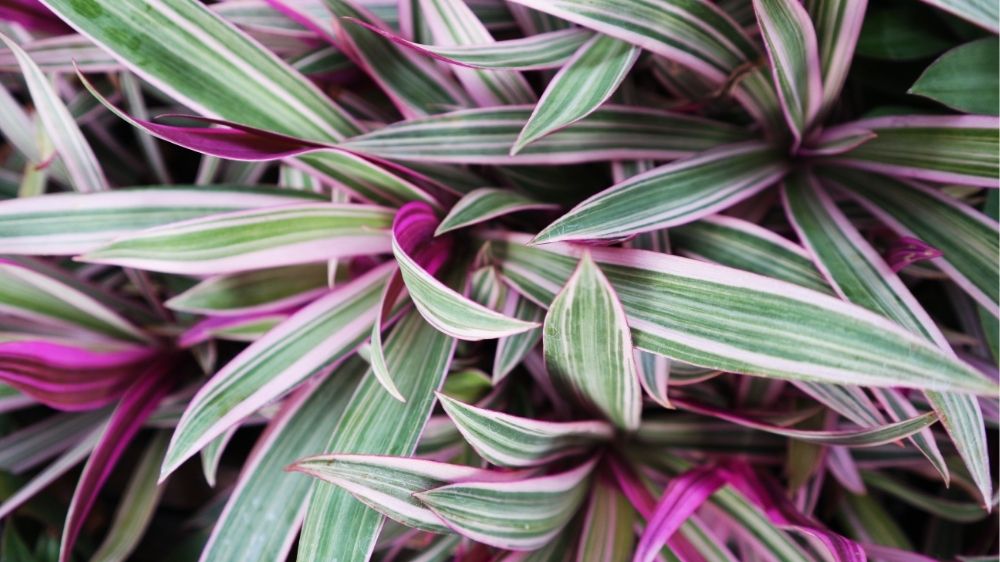
How Do I Know if My Oyster Plant is Dying?
The Oyster Plant is usually a very bright, vibrant plant. You’ll usually notice something is wrong with your Oyster Plant just by looking at it.
If you see dull leaves, your Oyster Plant is most likely not getting enough sun. While these plants can thrive in semi-shady spots, they may start to suffer without enough indirect sunlight.
If the leaves are burnt or dark around the edges, your Oyster Plant might be getting too much light. Excessive light can result in burnt leaves. You might even see spots on the leaves or holes where the sun is damaging them. After a while, the leaves may start to drop off.
When you see a lot of leaves around the base of your plant, your Oyster Plant is nearing death. Losing leaves is a sign that your plant is in trouble. The issues could be due to a lack of water, overwatering, or root rot. Root rot will kill your plant. Be on the lookout for dead leaves, a soggy texture, and other issues stemming from a rotting root.
If your Oyster Plant is experiencing root rot, you should remove it from the pot immediately. Cut off parts of the root ball that are black, brown, or soggy. Put the Oyster Plant in new soil and make sure that you’re not overwatering it and leaving the soil too wet. This is often the leading cause of root rot in the Oyster Plant.
Are Oyster Plant Plants Poisonous?
The Oyster Plant is not safe to consume, so it’s best to keep it out of reach from children and pets. While the flowers are used medicinally in the Philippines, the leaves are toxic if eaten. You’ll experience severe burning pain in the mouth and throat. The sap itself can also cause a rash when touched by some people and pets.
Considering it is used medicinally in some countries, it may be hard to believe that the Oyster Plant is toxic. Though, the individuals who utilize the beneficial aspects of the Oyster Plant are professionals who know precisely how to maximize its benefits without toxicity. For the rest of us, the Oyster Plant could cause a lot of discomfort for your pets or kids if they get a hold of it.
It’s recommended that you keep your Oyster Plant out of their reach, although some pets (like cats) won’t let you get away with placing the plant on a high shelf. If you have a mischievous cat who often gets into places they shouldn’t, consider a different plant that is non-toxic to pets, like the Calathea Rattlesnake.
Final Thoughts – Oyster Plant Care
The Oyster Plant is a low maintenance plant despite its colorful, tropical looks. The Oyster Plant doesn’t need too much to thrive, making this hardy and adaptable houseplant perfect for most homes. They are increasingly popular in homes around the world since they are striking, eye-catching, and don’t need a lot of special care.
Overall, the Oyster Plant is a fun and exciting plant to have in the home. It requires minimal plant care, relaxes the mind, and ties any room together!



